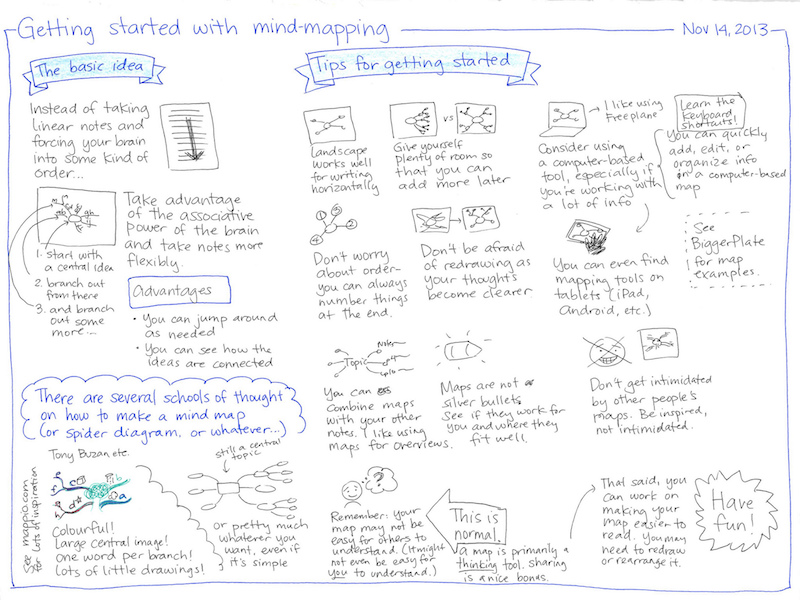This article is written by one of the language teachers at italki Image by Sacha Chua (CC BY 2.0)
One day during my ESL training class, the instructor divided the class in half and said he was doing an experiment involving memory.
To the first group he gave a regular list of twenty animals to remember, written out in bullet form. They were arranged like this:
●dogs
●lions
●zebras
●cows, etc.
To the second group he gave an identical list of animals, but instead of the names being organized in bullet points, they were arranged like this:

Then the instructor told us to put away the lists. Next, he gave us two minutes to try to remember as many of the animals as we could. I was in the group that had the regular bullet-form list of animals. The other group had the list with a circle in the middle, with lines and arrows pointing to each animal.
Guess which group had a better recollection of the animals? Yes, it was the group with the list of animals pointing to the circle named “mammals.” In fact, the group that used the circle and lines remembered twice as many animals as the first group!
But how was this possible? Why was the difference in recollection that significant? The second group used a memory device (tool) called a mind map.
What is a mind map?
A mind map is a tool for learning new things like vocabulary words and expressions. In fact, mind maps are so practical, they are used often in the business and world during meetings to organize ideas! Mind maps essentially work in a similar way that our brains do (hence the name)—by organizing a list of items into categories. We remember things better when they are in groups of related (similar) things, and thus mind maps work well.
How do you make a mind map?
Most ESL teachers have discovered the benefits of using a mind map to teach their students. It’s actually quite simple: Let’s say your teacher wants to teach you about feelings and emotions. First, your teacher draws a circle on the whiteboard and writes “feelings” inside the circle. Then on one side she might write “positive feelings,” and on the other, she would write “negative feelings.” Next, she would probably ask you to tell her some examples of positive feelings and some examples of negative feelings. As you tell her, she will take note of these examples and write them under the appropriate category on the whiteboard. As you observe this, your brain will start to remember them.’’
Then, if you copy down the mind map for yourself, you will reinforce the new words (make them stay) in your mind.

Many teachers do this, but some don’t. However, you don’t have to wait for your teacher to draw a mind map for you. You can make one yourself when you’re studying on your own or when you hear new words. And, there are all different kinds of mind maps—not just with circles, but with many different shapes and colors! Try to be creative when making a mind map.
How can you use a mind map?

- Learn phrasal verbs with mind maps. For example, write down the phrasal verb “make up” in the circle. Then, draw lines to the various definitions of “make up”: “create,” “lie,” “apologize,” “put on cosmetics,” “do something better the next time.”
- Learn greetings with mind maps. There are many answers to the question, “How are you?” Put this question in a circle, and then draw lines to various responses. You can start on one side with positive answers (fine, great, OK) and create another side with negative answers (not so great, so-so, lousy).
- Memorize the different forms of a verb. An example is “to write” (which you should write in the circle). Then, connect lines to different forms of the verb “to write”: “write,” “writing” (present-tense verb), “written,” “wrote,” “writing” (as a noun).
Start using mind maps to improve your English, and soon you’ll be using them for other practical purposes in everyday life.









